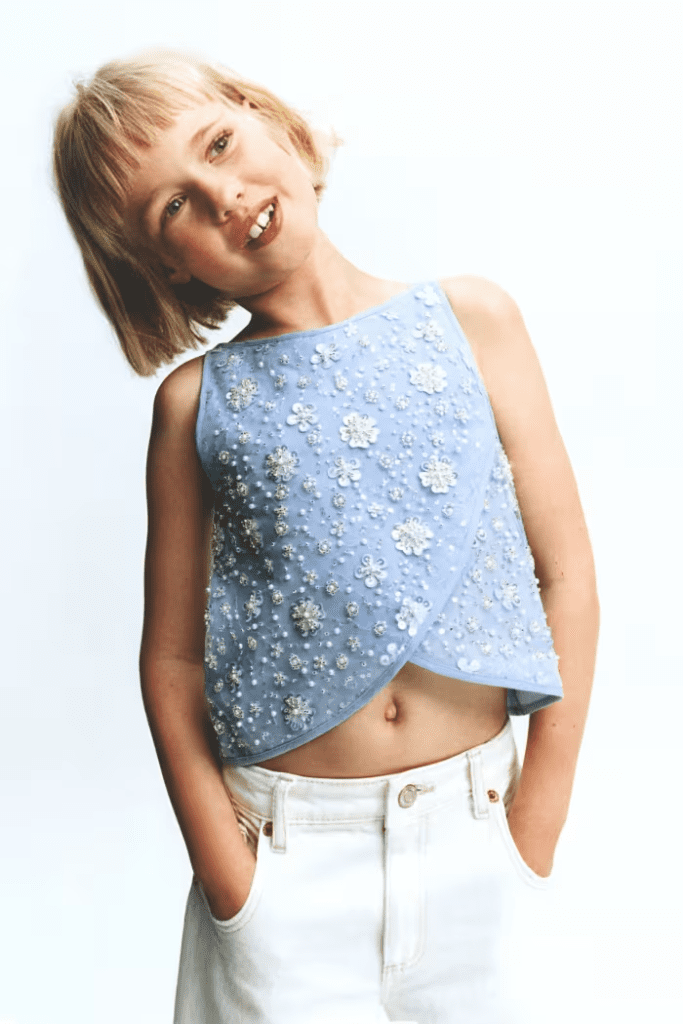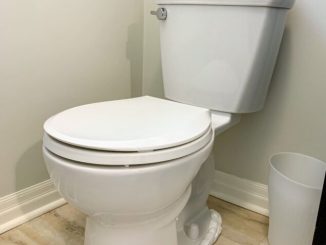The topic of young girls’ fashion choices—particularly the debate around crop tops—sparks strong opinions among parents, guardians, and society at large. For many, the question revolves around age-appropriateness, childhood innocence, and the potential social implications of dressing styles for young girls under 12. This article takes a closer look at why this concern exists, exploring the impact of clothing choices on a young girl’s development, self-image, and well-being.
Preserving Childhood Innocence

In today’s fast-paced world, childhood seems to slip by faster than ever. Ensuring that young children, especially those under 12, retain their innocence and enjoy their formative years is a priority for many parents.
- Emphasizing Age-Appropriate Dressing: Clothing choices can reflect a child’s age and developmental stage, and attire such as crop tops can sometimes project a more mature image than necessary. By dressing in ways that align with their age, children can maintain a carefree innocence, experiencing childhood without the pressure of adult fashion.
- Encouraging Positive Growth: Childhood is a time of exploration and growth. Encouraging children to dress in ways that highlight their youth helps reinforce the idea that they don’t need to grow up too fast.
Preserving innocence doesn’t mean restricting self-expression but rather encouraging children to embrace the simplicity and joy of being young.
Building Self-Esteem and Positive Body Image
The clothing we wear impacts how we feel about ourselves, and for young children, this relationship is no different. Clothing can play a key role in helping young girls develop a positive self-image.
- Fostering Confidence Through Age-Appropriate Choices: When young girls wear clothes that align with their age, they’re less likely to feel pressured to conform to mature styles prematurely. Age-appropriate attire fosters a sense of belonging and allows them to build confidence in a natural, gradual manner.
- Shielding Against Body Image Pressures: Crop tops, which can reveal midriffs, might inadvertently push young girls to focus on their appearance or compare themselves to older peers or media portrayals. By encouraging attire that doesn’t emphasize physical appearance, parents can help young girls prioritize self-worth over looks.
Helping children grow into their own skin without external pressures can be as simple as choosing clothes that promote comfort and self-assurance.
Protecting Against Social Pressure and Cultural Sensitivity
Children are naturally observant and sensitive to social cues, often picking up on the influence of their environment and peers. Clothing choices can invite certain social dynamics that young girls might not be ready to navigate.
- Minimizing Early Exposure to Peer Pressures: Wearing mature fashion styles, like crop tops, can subject young girls to the social pressures of comparison and fitting in. This can impact their self-esteem or push them into social situations they may not be ready to handle.
- Respecting Cultural and Societal Norms: Different cultures have varying beliefs about what is appropriate attire for young girls. For families who value modesty or hold traditional views, opting out of revealing clothing like crop tops respects these norms and helps children understand their family’s values.
Respecting cultural perspectives on attire can also provide children with a strong sense of identity, as they grow up with a clearer understanding of their family’s beliefs and cultural norms.
Teaching Boundaries and Modesty

An essential part of raising children is teaching them to understand boundaries—both social and personal. Clothing can be a subtle, yet impactful, tool for teaching respect for oneself and others.
- Introducing Concepts of Modesty and Personal Boundaries: Modesty in clothing helps young girls learn about personal boundaries. For children under 12, learning the value of modesty can build a foundation of self-respect and an understanding of self-worth that is not defined by outward appearances.
- Promoting Awareness Around Body Respect: As children grow older, they’ll encounter various social environments. Dressing modestly can provide a buffer, helping them to navigate these spaces with a healthy sense of self and awareness about respecting their bodies.
These lessons on boundaries and modesty prepare children for the complex social dynamics they’ll encounter in later years, giving them tools to approach the world with a secure sense of self.
Safety Considerations: Protecting Young Girls from Unwanted Attention
One significant factor in the conversation around crop tops for young girls is the potential safety concern associated with revealing clothing. Certain styles might unintentionally draw attention, and it’s essential for parents to consider this aspect.
- Reducing Exposure to Unwanted Attention: While crop tops are fashionable, they might expose young girls to attention that isn’t appropriate or wanted. This can create uncomfortable situations, especially if the child isn’t developmentally ready to handle such attention.
- Fostering a Safe Environment: As parents and guardians, creating a safe environment for children means equipping them with clothes that protect them from unnecessary or inappropriate scrutiny. Choosing attire that aligns with their age can help parents mitigate these risks and keep children comfortable.
Prioritizing safety over fashion may seem overly cautious, but it’s a small step that can protect young girls from situations they’re not prepared to face.
The Role of Parenting in Clothing Choices

Ultimately, the responsibility of making appropriate clothing choices falls on parents and guardians. This responsibility is an opportunity for parents to impart values and guidance.
- Guiding Through Example and Conversation: Parents serve as role models, and how they approach clothing and self-expression can influence children’s perceptions. Talking about why certain styles might be best saved for later years helps children understand the importance of making thoughtful choices.
- Encouraging Balanced Expression: It’s essential to find a balance between letting children express their personality and ensuring they understand the value of dressing appropriately. Parents can guide young girls in selecting outfits that are both stylish and suited to their age.
Open conversations about clothing choices become educational opportunities, allowing children to grow up with a balanced perspective on self-expression and self-respect.
Conclusion: Choosing Clothing That Lets Kids Be Kids
In the end, the decision on whether young girls under 12 should wear crop tops is deeply personal and often influenced by each family’s values, safety concerns, and cultural perspectives. Many parents feel that encouraging age-appropriate clothing helps their children stay focused on enjoying their childhood without the added pressures of dressing like adults.
Childhood is fleeting, and preserving its innocence, protecting self-esteem, and fostering healthy self-image are all valuable goals. By guiding young girls toward clothing that promotes confidence and modesty, parents can help them grow into strong, self-assured individuals. Choosing attire that lets kids be kids keeps the focus on what really matters—nurturing their growth and allowing them to experience the joy of simply being young.


